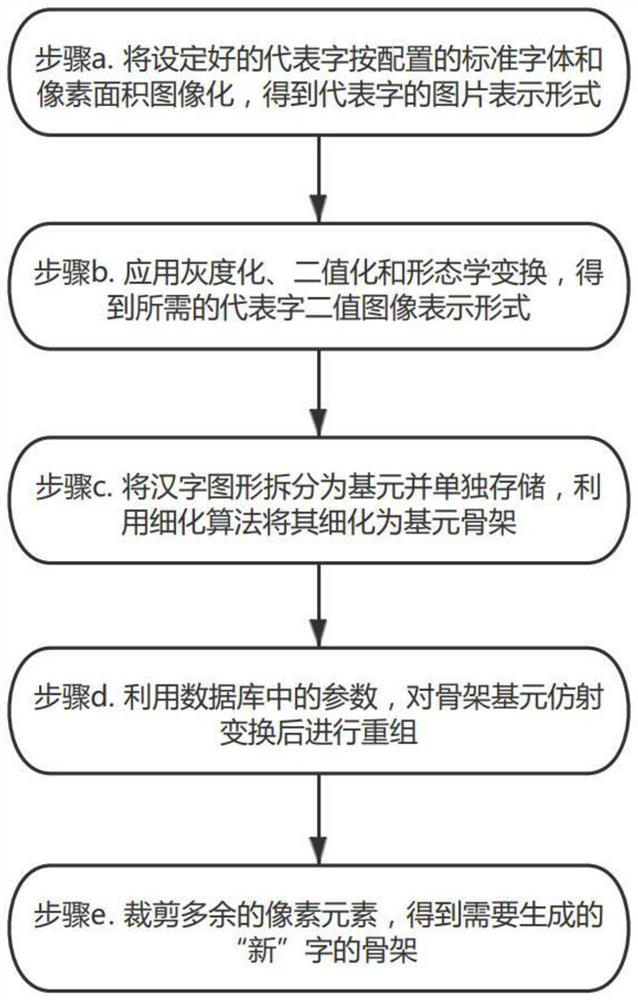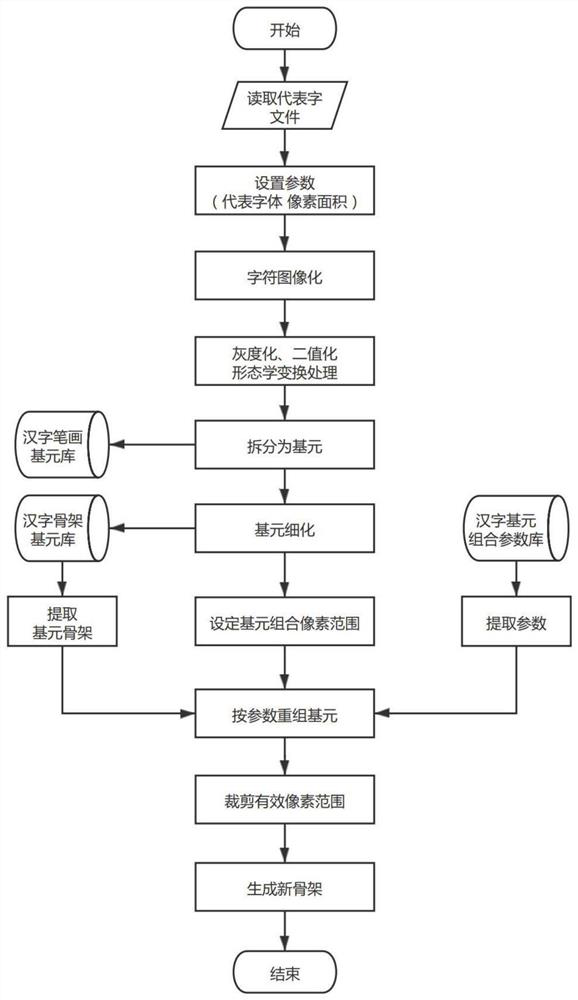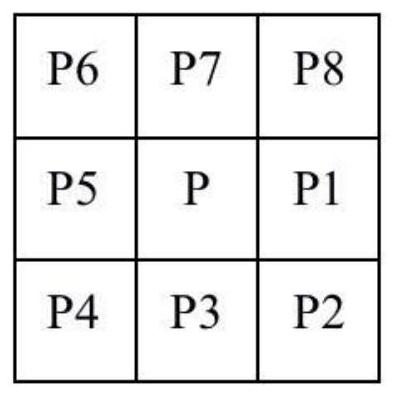Computer-based Chinese character skeleton generation method
A computer and skeleton technology, applied in the field of fonts, can solve problems such as low efficiency, cumbersome work, long cycle, etc., and achieve the effect of reducing workload, font design standards, and improving design efficiency
- Summary
- Abstract
- Description
- Claims
- Application Information
AI Technical Summary
Problems solved by technology
Method used
Image
Examples
Embodiment 1
[0044] Such as figure 1 and figure 2 Shown, a kind of computer-based Chinese character skeleton generation method comprises the steps:
[0045] Step a. Image the set representative word according to the configured standard font and pixel area, and obtain the picture representation form of the representative word;
[0046] Step b. Apply grayscale, binarization and morphological transformation to obtain the required representative word binary image representation;
[0047] Step c. Split the Chinese character graphics into primitives and store them separately, and refine them into primitive skeletons by using a thinning algorithm;
[0048] Step d. Using the parameters in the database, reorganize the skeleton primitives after affine transformation;
[0049] Step e. Crop redundant pixel elements to obtain the skeleton of the new character to be generated.
[0050] Step a includes:
[0051] Step a1. Prepare the required representative characters and standard font files, and sa...
Embodiment 2
[0063] Embodiment 2 is a further optimization on the basis of Embodiment 1.
[0064] Step c also includes:
[0065] Step c4. take out a binary image element in the Chinese character stroke primitive storehouse that step c3 obtains and send in the refinement program;
[0066] Step c5. Read the content of the first pixel in the element selected in step c4, and compare the relationship between the current pixel and its eight neighboring pixels to determine whether this pixel needs to be retained;
[0067] Step c6. traverse each pixel of the element, and repeat the process of step c5;
[0068] Step c7. After the end of step c6, a thinned skeleton of the stroke primitive is obtained;
[0069] Step c8. Take out the next element in order from the Chinese character stroke primitive library, and repeat the process from step c5 to step c7;
[0070] Step c9. After step c8 is completed, the thinned skeleton of each stroke primitive in the Chinese character stroke primitive library is o...
Embodiment 3
[0080] For the convenience of explanation, the concept of frequently occurring primitives is first explained here.
PUM
 Login to View More
Login to View More Abstract
Description
Claims
Application Information
 Login to View More
Login to View More - R&D
- Intellectual Property
- Life Sciences
- Materials
- Tech Scout
- Unparalleled Data Quality
- Higher Quality Content
- 60% Fewer Hallucinations
Browse by: Latest US Patents, China's latest patents, Technical Efficacy Thesaurus, Application Domain, Technology Topic, Popular Technical Reports.
© 2025 PatSnap. All rights reserved.Legal|Privacy policy|Modern Slavery Act Transparency Statement|Sitemap|About US| Contact US: help@patsnap.com



